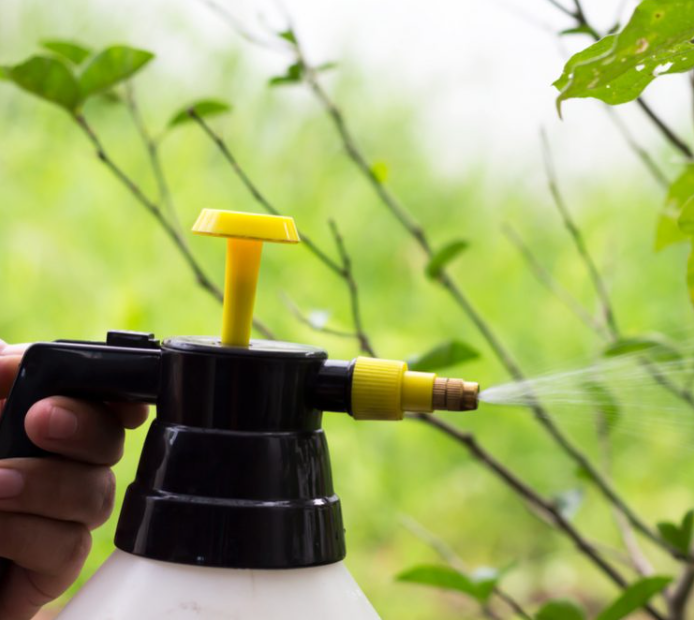The fall webworm, Hyphantria cunea (Drury), is native to North America and is a common caterpillar pest of trees. It attacks more than 88 kinds of plants in North America, including many fruit, nut, and ornamental trees and shrubs. It does not attack pines and other needle-bearing trees (conifers). Fall webworms are known for their large webs on terminal foliage. Heavy infestations are rarely fatal, but if they occur over several years they can make trees more susceptible to drought, disease, or other insect pests. The fall webworm’s plant preference varies according to region. In East Texas, they most often attack sweet[1]gum, oak, hickory and pecan.
Fall webworms can be managed on smaller trees without insecticides. You can do this by physically removing the webs, caterpillars, or egg masses. You can knock larvae out of low-hanging webs. Fall webworm egg mass into a box or garbage bag with a stick or broom. You can also prune webs from lower and smaller branches, or pull them down with a rake or a pole. Beneficial insects attack the eggs and larvae of the fall webworm and keep populations under control in many years. You can help beneficial insects by tearing open the protective webs. If webs are too numerous or too high in a tree to deal with individually, you can use insecticides to prevent damage. Hose-end or commercial high-pressure sprayers are best for reaching upper parts of trees. Webworm larvae stay inside their web so insecticide sprays must penetrate the web to be most effective. For best control, apply insecticides when webs and caterpillars are small. Insecticides containing Bacillus thuringiensis (Bt) or spinosad are effective and will not harm beneficial insects. Carbaryl and pyrethroid insecticides (such as permethrin, cyfluthrin, bifenthrin, and esfenvalerate) are highly effective against fall webworm. How[1]ever, these insecticides are also toxic to beneficial insects so use them only for severe infestations. Insecticidal soaps and horticultural oil sprays can also be effective when applied directly to caterpillars in their nests. Insecticide labels are subject to change—always read and follow instructions on the pesticide label carefully. You are responsible for the effects of pesticides on your own property, as well as problems caused by drift to other properties. Not all insecticides are registered for fall webworms on all sites and commodities. Read the label to make sure the insecticide is labeled for your site and commodity. For more information on this or any other agricultural topic please contact the Hopkins County Extension Office at 903-885-3443 or email me at [email protected].







